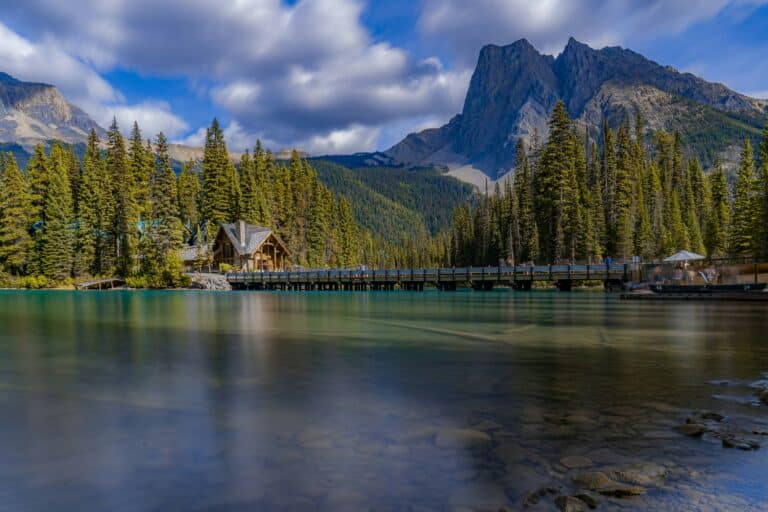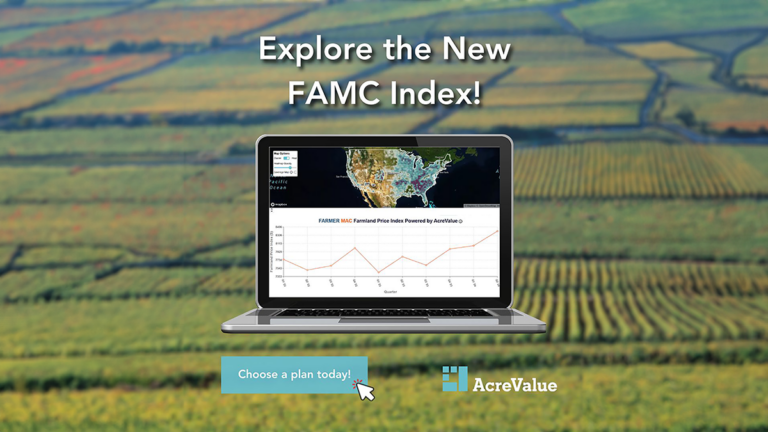Like many remote workers in the beginning of COVID, I was intrigued by the opportunity to live and work wherever I wanted to. Given the agencies I worked for at the time had no intentions of going back to an office, I began looking for a rural piece of property to call home. The idea of working remotely from home while running a small farm felt like an amazing idea. I quickly learned that it was not as dreamlike as I had hoped it would be.
When record low interest rates are being thrown in your direction it’s easy to make rash decisions. Maybe overlook some inadequacies and deficiencies because you’re getting a deal on the mortgage. Though the rush to rural areas has cooled, the allure of moving to the country is still there for many people. The goal of this article is not to discourage anyone from chasing their dream of living on that small homestead but it’s to better inform you so you avoid some of the mistakes I made that soured the country lifestyle I had hoped for.
The Allure vs. Reality of Rural Property Management
The Unexpected Scale of Land Maintenance
When I purchased my piece of the country life, I envisioned peaceful weekends tending to a modest garden and enjoying nature. What I wasn’t prepared for was the relentless battle with nature itself.
I learned very quickly my first year if you don’t properly attend to the weeds early in the spring you will just be fighting them all year. I had a large machine shed that would get covered in vines by the end of May. They were invasive and next to impossible to manage late into the spring. Additionally, there was about another half-acre of the property that I kept a path mowed in as the weeds were impossible to keep back if they weren’t attended to early in the spring.
Aside from weeds, I moved onto a 5-acre piece of property and did not own a lawn mower. Conversely, I did not do proper research into what type of lawn mower would be best for my property. I settled on a traditional style riding mower with a 4.5-foot deck. This felt like the right thing to get because of the large cutting deck. The problem was that the property wasn’t flat and the style mower I bought didn’t like some of the property. It more than got the job done but handling the yard work would be 10-11 hours start to finish.
What I Wish I Had Known:
Before purchasing rural property, you should research the following:
Local Vegetation and Invasive Species: The USDA Natural Resources Conservation Service (NRCS) provides regional plant guides that can help you identify what grows naturally in your area and which invasive species might become problematic. Understanding what you’re up against is the first step in creating a maintenance plan. You can access their comprehensive PLANTS Database and Plant Guides for detailed information about conservation plants and vegetation management.
Equipment Requirements Based on Acreage: For properties over 2 acres, a standard push mower simply won’t suffice. According to Cooperative Extension resources, proper equipment might include:
- A riding mower or small tractor with mowing attachment
- Brush hog for field areas
- String trimmers for edges and hard-to-reach areas
- Chainsaw for fallen limbs and tree maintenance
Time Commitment Reality: The University of Minnesota Extension suggests budgeting approximately 2-3 hours of maintenance per acre per week during growing seasons. This means my 5-acre property required 10-15 hours weekly just for basic upkeep. This is accurate based on the amount of time I spent on week was in this range.
Seasonal Maintenance Calendar: Your local Cooperative Extension office likely offers a maintenance calendar specific to your region, outlining when to perform critical tasks such as:
- Early spring weed pre-treatment
- Summer mowing schedules
- Fall preparation and cleanup
- Winter planning and equipment maintenance
I was able to settle into a good groove of maintaining the yard but it took some time and there were still points where it was really tough to manage with work. Something I was cognizant of was using less harmful solutions when it came to the weeds. Controlled burning in the spring and using concentrated vinegar was incredibly helpful at keeping overgrowth at bay.
The Hidden Costs of Rural Infrastructure
The sticker price of rural property often appears remarkably affordable compared to urban homes. However, what many city-dwellers fail to account for are the infrastructure costs that come with rural living.
My parents home was on well and septic so I just assumed I knew what to expect. When I viewed the home I bought the water seemed fine. I quickly learned the water wasn’t fine. Going back to my earlier statement about being blinded by the country life, I was so excited about having a barn, silo, and a huge machine shed that had one section finished off like a party room with a pool table that I overlooked the water.
When I moved in the water was gross and dirty. I had to call out a company to test my water and they told me what probably happened was the owners had the water treated to last through the sale. I am not accusing anyone of deceptive practices or doing anything illegal but I made the mistake of not doing my due diligence.
What I Wish I Had Known:
Water Quality Testing: The Centers for Disease Control and Prevention (CDC) recommends comprehensive water testing before purchasing any property with a private well. Tests should include:
- Basic water potability (bacteria, nitrates, pH)
- Common minerals and metals (iron, manganese, hardness)
- Region-specific contaminants (based on local geology and agricultural practices)
A comprehensive test costs between $200-500 but could save thousands in unexpected filtration needs. What I learned about my water is that it had a high concentration of organic iron. I needed to install a new water softener system as well as an iron filter. This cost me around $4,000 for both systems installed but was more than worth it. I did end up spending much more on the iron filter by going with an oxygen filter system that doesn’t rely on harsh chemicals. Again, cost more but was well worth it.
Understanding Rural Heating Systems: Unlike city homes with natural gas lines, many rural properties rely on propane or heating oil. The U.S. Department of Energy provides resources on understanding these systems and their seasonal cost fluctuations.
This is not necessarily a bad thing as propane heating gas was cheaper than natural gas for me. There was some sticker shock the first time the gas company came out and refilled my 500 gallon propane tank. My tank would be filled 3 times from October to March and each time would be between $200-300. I wouldn’t need a refill through the summer as I wouldn’t need heat and I would dry clothes outside. It was an expense I made sure was saved for when winter rolled around.
Rural Property Inspection Specialists: Standard home inspectors may miss rural-specific issues. Organizations like the American Society of Home Inspectors or InterNACHI can help locate inspectors with rural property expertise who know to check:
- Well and septic systems
- Water quality and treatment systems
- Unique heating systems
- Outbuildings and land features
Infrastructure Replacement Costs: Based on current market data, major rural system replacements typically cost:
- Well pump replacement: $1,000-2,500
- Water filtration systems: $1,000-5,000 depending on contaminants
- Septic system repairs: $3,000-10,000+
I made sure that I brought in a very reputable home inspector when that time came. Though I am going through some of the difficulties I dealt with, the home structure was not one of them. The inspector I had hired was incredibly thorough and had told me he had a very hard time finding much wrong with the home. He didn’t do water testing and I waived that test as I was a bit too trusting.
When I bought and sold my property, outbuildings were sold as is. This is rather typical in rural property sales. This is because repair costs can be very high and it won’t add the value to the property relative to the cost of the repairs. The barn that was on my property needed a new roof. I got an estimate for $20k but it would not have added that much value to the property and therefore I did not do it.
The Rural Social Landscape
Community Integration Challenges
Rural communities often have deep-rooted social structures that can be difficult for newcomers to navigate. I imagined the rural landscape as being very inviting and welcoming and it was and wasn’t. I found some people were very nice and welcoming and some felt I was encroaching on their town and was going to bring evil city vibes to the country. They didn’t seem to understand I was looking for a slower and quieter life.
What I Wish I Had Known:
- Research the community culture before moving by visiting local establishments and events
- Find community connectors who can help introduce you to local networks
- Understand that integration takes time and patience. This can take years, not months
- Consider how your presence might be perceived and approach with respect for existing community norms
Adjusting to Rural Rhythms
The pace and schedule of rural life differs significantly from urban environments. I had to get used to businesses being closed on Sunday and have hours that corresponded with my work hours during the week. Being a remote worker offered the luxury of being able to run midday errands, you may not have that luxury every day or with every company. I also had to get used to carrying cash again. A lot of the small businesses either didn’t accept credit cards or offered discounts for using cash.
Key Considerations:
- Most rural businesses operate on earlier schedules than city establishments
- Sunday closures are common in many rural communities
- Planning ahead becomes essential for shopping, services, and entertainment
- Seasonal activities often dictate community schedules
Agricultural Aspirations vs. Reality
The Learning Curve of Rural Living
Many urbanites dream of raising animals and growing food, but the reality requires significant knowledge and commitment. I felt chickens would be easy to raise as they just need somewhere to sleep and lay eggs. This is true but they’re a bit more work than that. They need water, food, and regular attention. I wasn’t sure what to look for if they were sick or if something was wrong with then. I also wasn’t prepared for proper coop maintenance. They require clean dry bedding that needs to be changed often and it was additional costs and time I wasn’t factoring into my schedule. Aside from taking care of their coop, food, and water, I was not prepared for all the predators in the area. In my area there were hawks, eagles, coyotes, fox, minks, and weasels. All of these prey on chickens and unfortunately I lost a large amount of my chickens to predators. The only way to 100% ensure their safety is a fully enclosed structure but even then they’ll find ways.
I then decided I needed ducks. I just assumed they were chickens who liked to swim in water. I was very wrong. Ducks are rather destructive and smell. They required more hands on attention than the chickens and there was a lot of learning when it came to getting their coop setup right. I was able to sell my ducks to a local farmer as I had all females and they wanted to sell the duck eggs. My property came with an animal pen and I had considered pigs, goats, and sheep at one point but never ended up doing it.
Practical Advice:
- Start small and scale gradually as you gain experience
- Connect with local agricultural extension offices for education before purchasing animals
- Calculate the true time commitment required for animal care
- Understand predator concerns and protection requirements
- For my chicken run I had put steel mesh on the bottom of the fence and out 1 foot to prevent digging as well as adding bird netting to keep flying predators out.
Building Sustainable Rural Connections
Developing relationships with established local producers can provide both community connection and access to quality products. I was incredibly spoiled having farmers and farm stands minutes from my home with fresh meat and produce most of the year. Aside from access to farm fresh product, I began to make friends in the community and became more widely known. I did start to help some individuals with their websites or some general digital marketing consulting. This helped connect me with more individuals that could help me with other facets of my life. An example being the water company that installed my filter came from one farmer I was buying beef and pork from.
A few of the benefits I gained from these relationships included:
- Local farm relationships provide access to fresh, quality products
- Supporting local producers helps integrate into the community
- Learning opportunities abound through connection with experienced rural residents
The Rural Rewards
Despite the challenges of rural living, there are a lot of benefits and positives to it. I am still connected with some of the people I met in my town and I consider them friends. I did get to enjoy outdoor activities on my property like shooting, archery, 4 wheeling, and snowmobiling in the winter. My home was only a half a mile away from the Illinois snowmobile network as well. This allowed for some late afternoon cruises that were a lot of fun.
I thoroughly enjoyed the access to quality farm fresh products. I find it hard to buy meat from a grocery store after buying it fresh from the farm. There is a large difference in the taste and quality. I also miss the silence of the country.
Authentic Rural Advantages:
- Recreational freedom on your own property
- Connection to natural environments and seasonal rhythms
- Access to locally produced food
- Space for pursuing hobbies and projects not possible in urban settings
Don’t Be Afraid, Be Prepared
Setting up a country life can be incredibly beneficial and rewarding. Before you make that dive into the rural life do as much research as possible before you settle on a piece of land. I am not looking to deter anyone from buying land but want to make sure you are fully armed to make a smooth transition into a rural lifestyle. If you are looking to make the leap into the rural lifestyle, start on Land.com to find your perfect open space.
Additional Resources:
NRCS Plant Materials Program: Plant Materials
Well Water Safety Information: CDC Well Water Safety
Private Well Information: EPA Private Wells
Rural Heating System Information: EIA Rural Heating
Septic System Funding Programs: EPA Septic Funding



